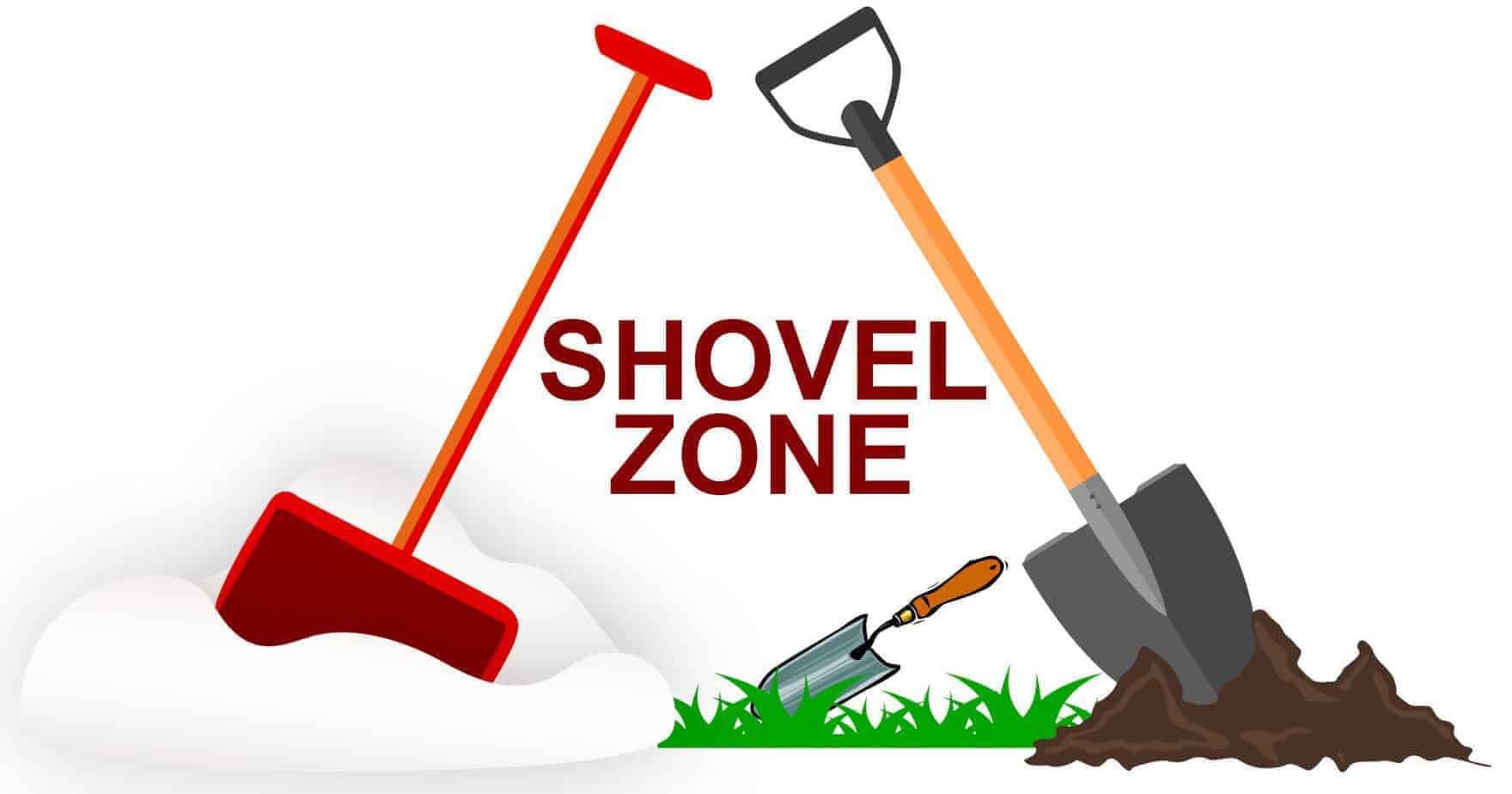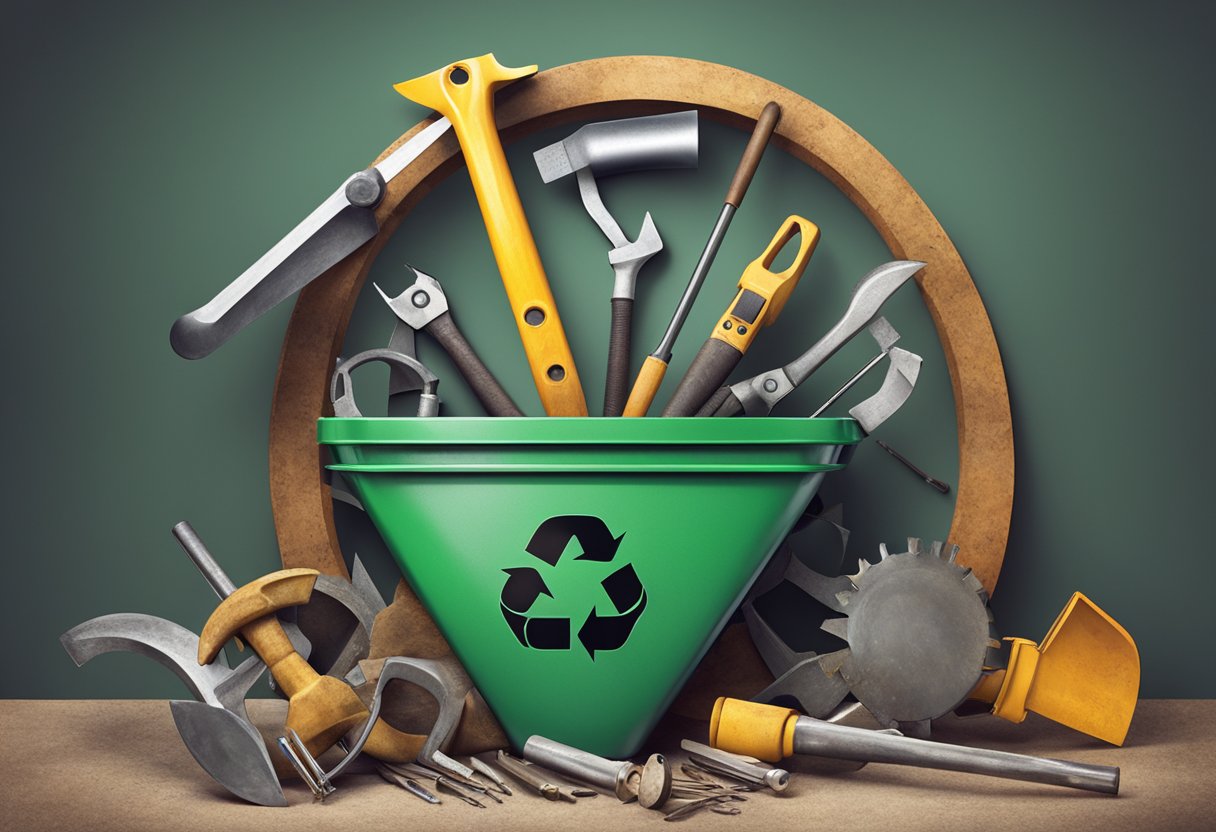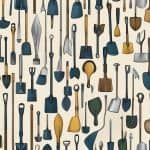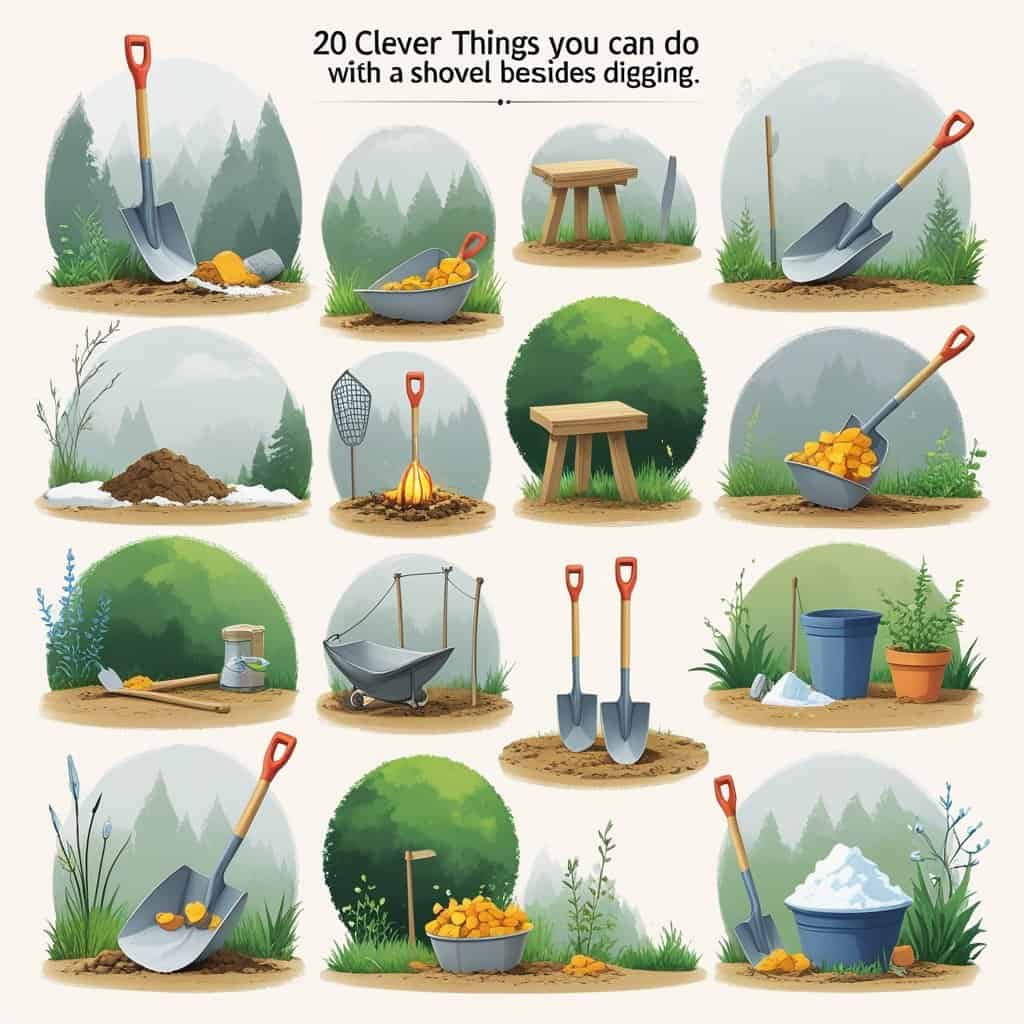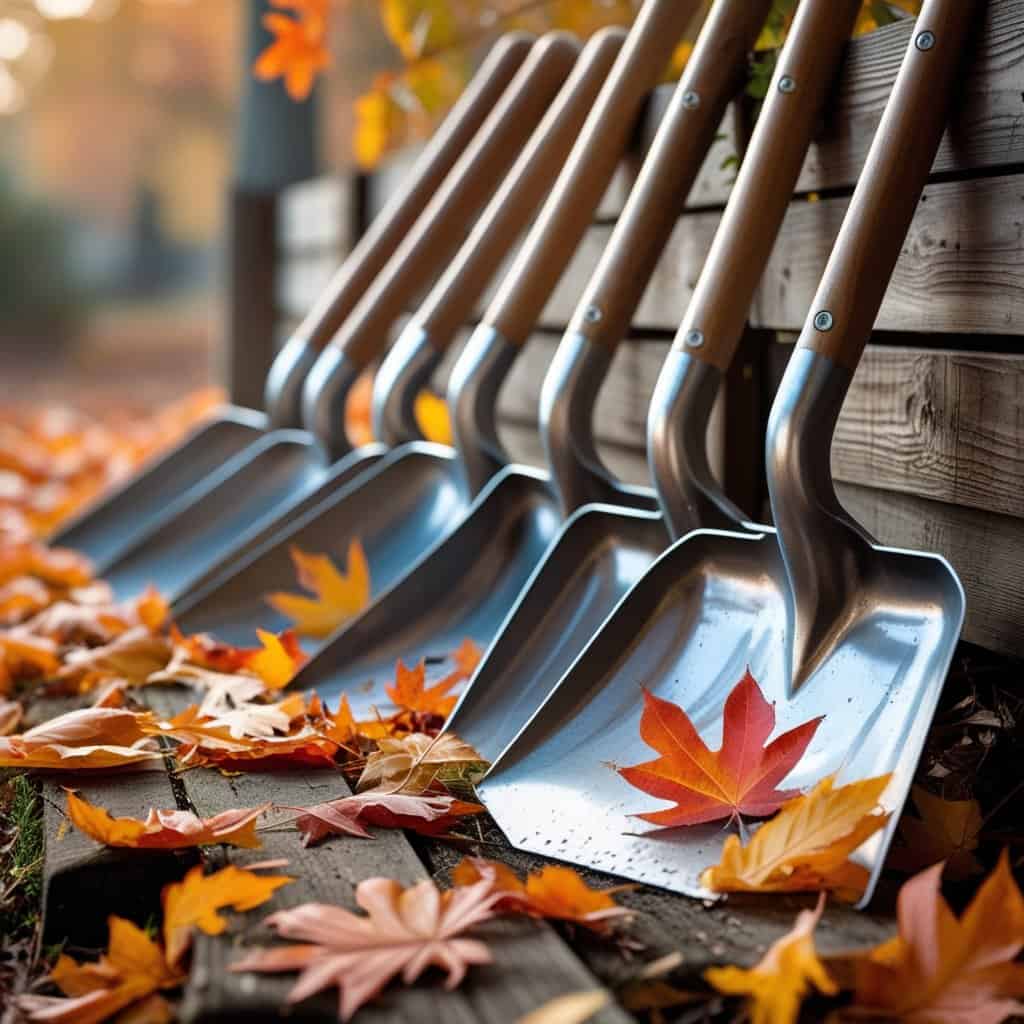If you have old garden tools gathering dust in the shed, don’t toss them. Recycling and upcycling those worn-out shovels can turn them into handy or decorative pieces for your home and garden, saving you money and cutting down on waste.
With some imagination, tools that look ready for the dump can serve a new purpose.
Instead of letting old shovels sit there, you could turn them into organizers, racks, or planters. Some folks make rustic shelves or garden art using just the shovel heads.
Plenty of simple ways to give your old tools a second chance and add something unique to your space.
If you want to see this in action, there are many easy ways to get started, from garden art to functional shelves and organizers.
Table of Contents
Transforming Old Tools: The Circular Shovel Approach
You can bring an old shovel back to life with some basic recycling and upcycling tricks. Knowing which shovels to use, what tools you’ll need, and the steps involved makes the process way more enjoyable.
Core Principles of Recycling and Upcycling
Recycling means breaking down materials to be used again in new products. For shovels, that might mean taking the metal to a recycling center.
Upcycling is a bit different. It means improving or reimagining an old item for a new job. It reduces waste and gives your tools a second shot at usefulness.
The circular approach? It’s all about keeping stuff in use for as long as possible. You reuse parts, reduce what ends up in the trash, and make practical or just cool things to look at.
Turning shovels into racks, planters, or quirky garden tools fits right into this thinking.
Identifying Suitable Shovels for Repurposing
First, examine the shovel’s condition. If the handle or blade is solid, you’re in luck with upcycling.
Cracked or rusty parts might not work for DIY projects, but you can still recycle them.
Different shovel types open up different project ideas. A flat-blade shovel could become a shelf, while a round-point might make a good wall hook or planter.
Don’t use shovels that have been treated with chemicals or are too damaged to fix.
People have made everything from tool racks to planters or birdhouses from old shovels. Before you start, check the handle and metal.
Step-By-Step Repurposing Methods
- Clean the shovel
- Scrub off dirt, rust, or paint with a brush or sandpaper.
- Cut or shape as needed
- Use a hacksaw or grinder for metal, and a saw for wood. Wear gloves and goggles.
- Assemble new parts
- You may attach the blade to wood, add hooks, or mount it on a wall.
- Paint or coat (Optional)
- Give your project a coat of paint, sealer, or oil to help it last longer.
Plenty of DIY guides show how to turn an old shovel into a tool rack or a better garden tool in just a few steps.
Start small if you haven’t tried upcycling before.
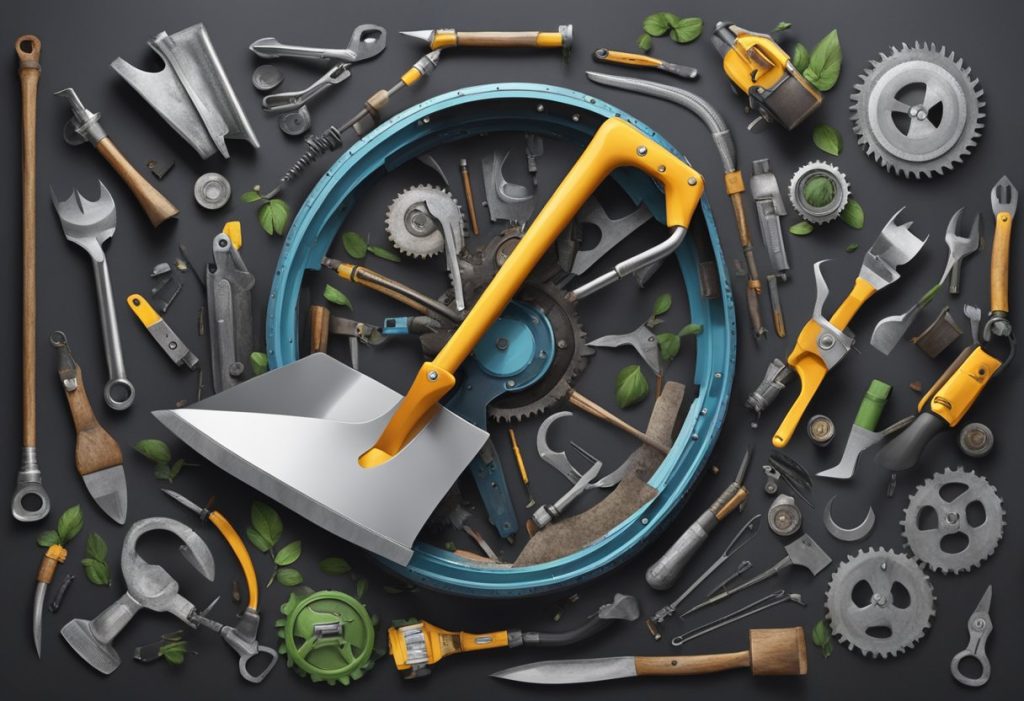
Creative Applications and Sustainability Impact
Old shovels and tools can do much more than you’d expect if you’re willing to experiment. Upcycling garden tools not only keeps junk out of landfills, but also saves energy and can inspire others around you to get involved.
Innovative Projects Using Upcycled Shovels
You can turn worn-out shovels into all sorts of things for your home or garden. Some people create coat racks, key holders, or even furniture.
Mounting a painted shovel on the wall gives a rustic vibe and keeps valuable items from ending up in the trash.
If you combine shovels with other materials, they make cool plant trellises or birdhouses in the garden. You can also paint the blade and turn it into a garden sign with labels or fun messages.
These projects save money and make something new from what you were about to throw out. Need more ideas? Check out EZ CleanUp’s guide to repurposing garden tools.
Environmental Benefits of Circular Tool Use
Using old tools instead of buying new ones shrinks your carbon footprint. Making new garden tools eats up resources, but upcycling uses what’s already around.
It also helps support a circular economy—basically, keeping stuff in use instead of tossing it.
Less waste in the landfill means fewer greenhouse gas emissions. Upcycling usually takes less energy than recycling or making something from scratch, which is a win for the planet.
Curious about how upcycling helps? Here’s a guide on upcycling and sustainable practices.
How to Inspire Community Participation
Through workshops, garden projects, or tool swap events, you can engage your community in tool upcycling. Group projects let people learn new skills and reduce waste together.
Make it easy—share simple instructions, gather supplies, and offer project ideas. You could also host a contest for the best upcycled tool or set up a drop-off spot for old tools.
Posting photos of finished projects on social media or community boards can get more folks interested and involved.
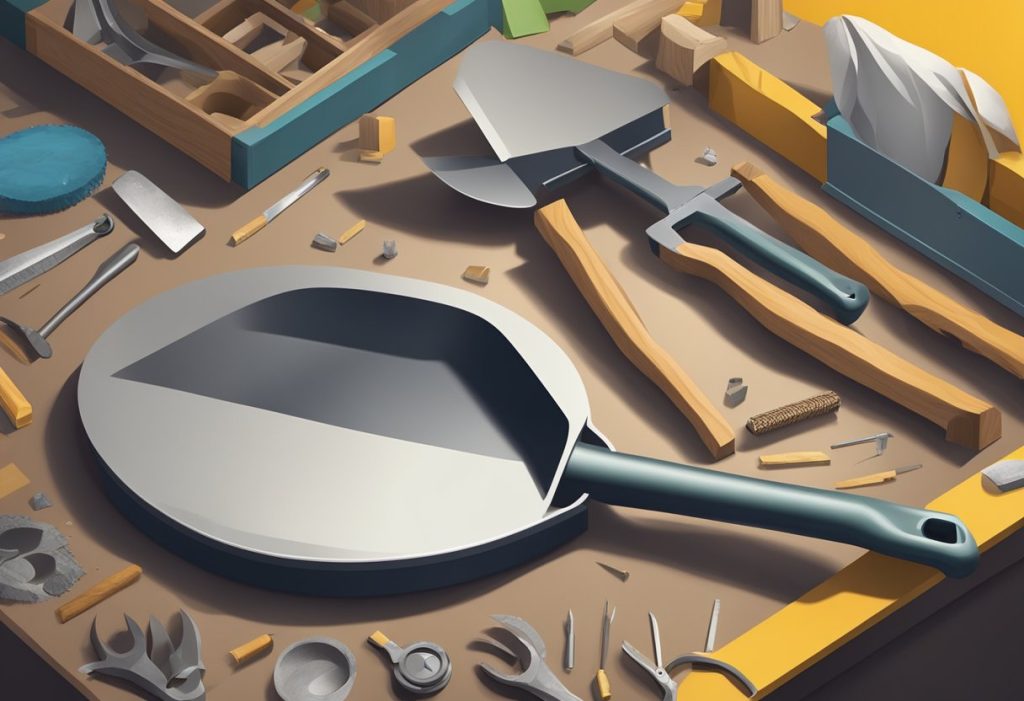
Frequently Asked Questions
What are the best methods for recycling metal tools like shovels and saws?
Most recycling centers take metal tools like shovels and saws. You can also drop them off at your local waste facility, which collects scrap metal.
Some areas even offer free bulky waste drop-offs for metal items, which keeps these tools out of landfills.
What steps are involved in converting old kitchenware into DIY home and garden tools?
Clean everything well and get rid of sharp or loose bits. Sand down rough edges.
Drill holes or reshape the item to fit your new idea. For example, you could turn a colander into a hanging basket by adding ropes and filling it with soil and plants.
Are there any safety considerations to consider when creating tools from upcycled materials?
Wear gloves and safety glasses when you cut or drill metal or hard plastic. Make sure the handles are tight so nothing slips.
Check for sharp edges and file them down. Don’t use rusty or badly damaged materials that could break while working.
